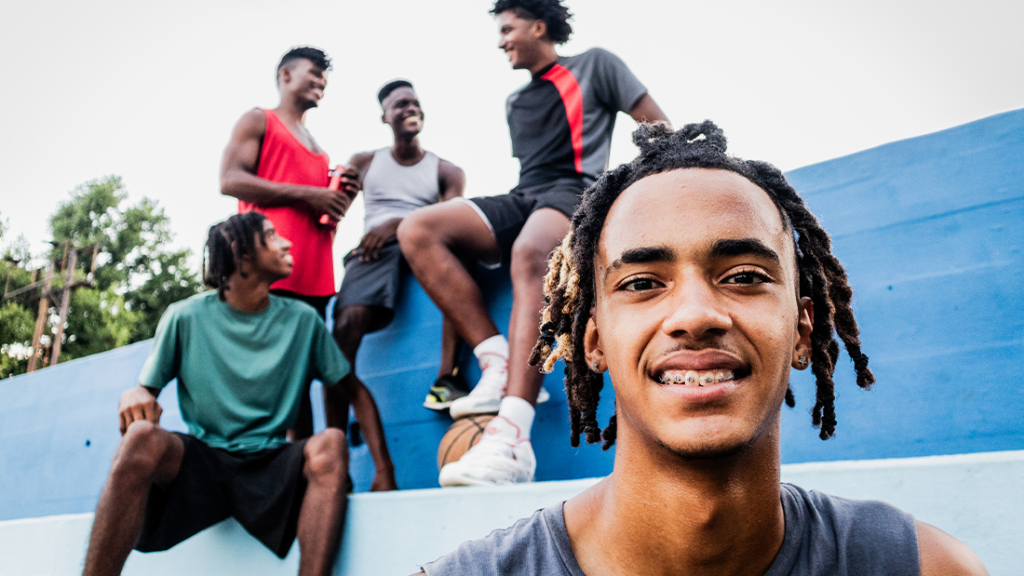Know Your Role: Turning 18 In The Movement

Every Participant in the U.S. Olympic and Paralympic Movement (“the Movement”) must follow the SafeSport Code. But now that you are (or about to turn) 18, you have new responsibilities under the Code. You also may be required to follow the Minor Athlete Abuse Prevention Policies (MAAPP).
We encourage you—and your parents/guardians—to learn everything you can about your new role. Use the guidance below as a starting point. You should also check with your National Governing Body (NGB) to make sure you are following their policies for athletes who are about to become Adult Participants.
Step 1: Review the SafeSport Code.
The SafeSport Code will help you understand some of the ways your role as an Adult Participant is different. While some points are highlighted below, you are responsible for knowing and following all of the policies in the Code.
Some information you should know includes:
- How the Code defines types of misconduct and abuse. For example, while the terms “Bullying Behavior” and “Harassment” describe similar behaviors, Bullying Behavior defines actions directed at minors. Harassment can be directed at anyone.
- Your state’s laws about consent and the Code’s policies about romantic and other intimate relationships:
- You can’t be in an intimate relationship with anyone who you have real or perceived power over (e.g., you are a coach).
- You can’t be in an intimate relationship with a minor who is younger than you by more than three years.
- Adults and minors who have violated the Code may face different outcomes after going through our Response and Resolution process. This fact sheet can help you learn more about the Center’s process for handling reports.
Step 2: Learn Your Reporting Responsibilities.
If someone has experienced misconduct or abuse, they are encouraged to make a report, but they do not have to make one. Minor Athletes also do not have to report, but Adult Athletes must know and follow all reporting requirements in the SafeSport Code. If you suspect, learn about, or witness misconduct or abuse, you must report it.
Some information you should know includes:
- How to respond to disclosures. We should respond with empathy and honesty when someone shares about abuse. These tips for responding to a disclosure can help you offer support.
- Mandatory reporter requirements, including those you have under federal or state law. Under the Code you must report known or suspected:
- Child Abuse and Child Sexual Abuse. You must report it immediately to law enforcement, the Center, and anywhere else state law requires—even if the person who experienced the abuse as a child is now an adult.
- Sexual Misconduct. You must report it to the Center immediately, but no later than 24 hours. If a minor is involved, the requirements for reporting Child Abuse apply.
- Adult Athletes are required to report emotional and physical misconduct and abuse, as well as violations of the policies in the SafeSport Code and MAAPP.
- The steps for reporting, including when and where to report. Learn more about how to make a report in this guide.
Step 3: Get—and stay—SafeSport® Trained.
The SafeSport® Trained Core course introduces you to the SafeSport Code and your reporting responsibilities. It will also give you the skills you need to play an active role in abuse prevention.
Adult Athletes must:
- Complete the online SafeSport® Trained Core course to become SafeSport® Trained. Ask the member services liaison at your National Governing Body (NGB) how to access the course. Your NGB may offer the course on its own portal or direct you to the U.S. Center for SafeSport’s learning portal.
- Take a yearly Refresher course to keep their SafeSport® Trained status. Learn about these courses and the other online courses we offer.
Step 4: Follow the MAAPP.
As an Adult Athlete, you are an Adult Participant and must follow the Minor Athlete Abuse Prevention Policies (MAAPP). It applies to you, even if you have just turned 18. The MAAPP limits one-on-one interactions between Minor Athletes and Adult Participants. This is because it is easier for abuse to occur when a minor is alone with an adult. While some points are highlighted below, you are responsible for knowing and following all MAAPP policies.
Some information you should know includes:
- When the MAAPP applies. This series of videos about the MAAPP explains how it works and what interactions it covers, such as:
- Emails, texts, social media, and other electronic communications
- Competitions, team meals, and other activities
- How your role in your sport organization influences your responsibilities under the MAAPP (e.g., if you supervise Minor Athletes).
- How to make your interactions with Minor Athletes “observable and interruptible,” or if electronic, “open and transparent.”
- When close-in-age exceptions apply. These exceptions help you follow the MAAPP without giving up the team bonds you’ve made. Close-in-age exceptions allow one-on-one interactions with Minor Athletes as long as:
- You don’t supervise or have authority over them and
- You are not more than 4 years older than them.
Step 5: Take the Lead on Safety.
Proactively fulfilling your new responsibilities as an Adult Athlete helps you create a sport environment where everyone is included, safe, and supported.
Some information you should know includes:
- What makes a sport environment unsafe. When you see the signs of an unhealthy sport environment, you can advocate for policies and practices that protect athletes.
- You have the power to help. For example, if you see misconduct happening you can use these bystander intervention strategies to offer support.
- You can help your team form healthy bonds. Model respectful and inclusive behaviors like good sportsmanship and planning team events where everyone can participate.
- How to help others find education about abuse prevention. Let your teammates know about the online SafeSport courses for youth, parents, volunteers, and others.
